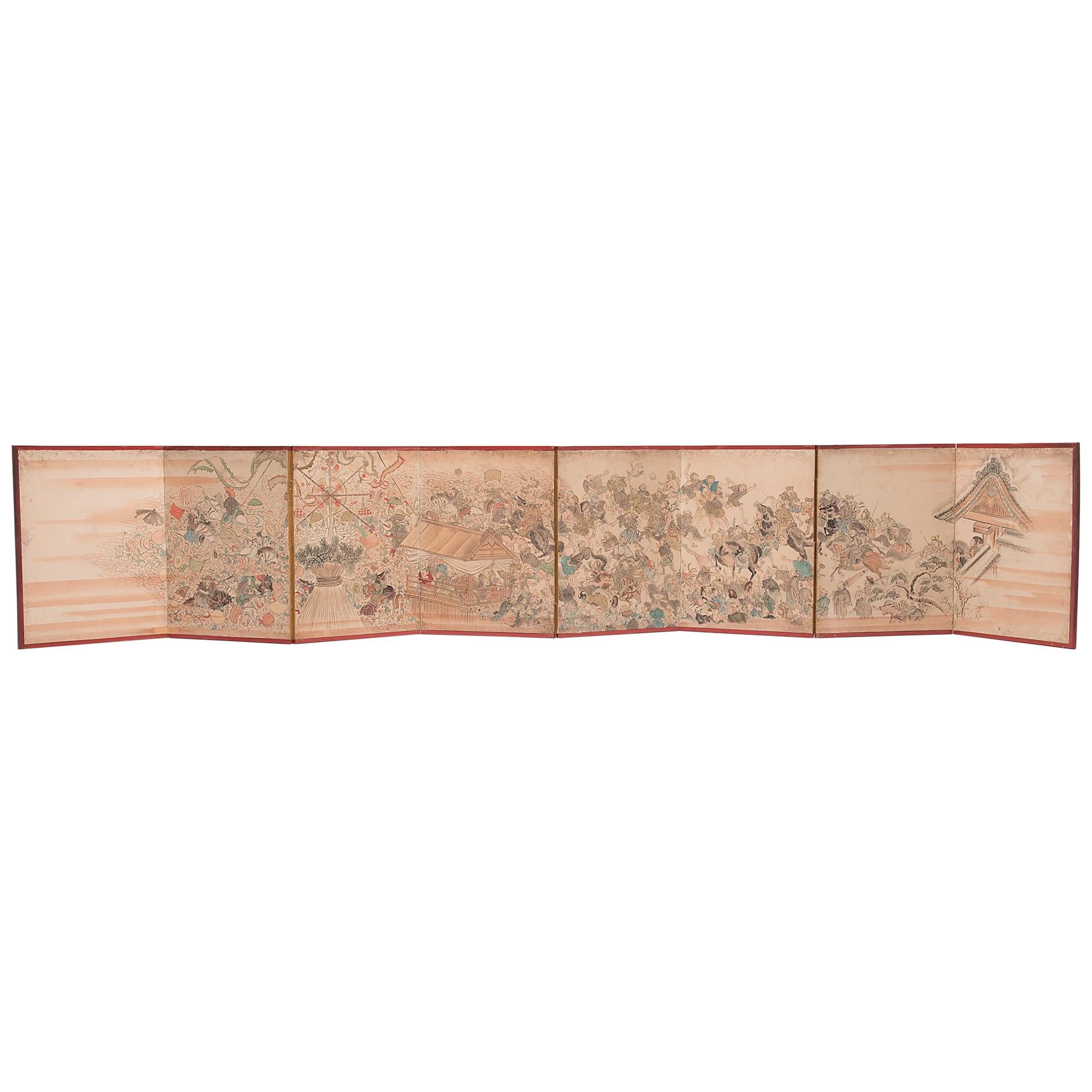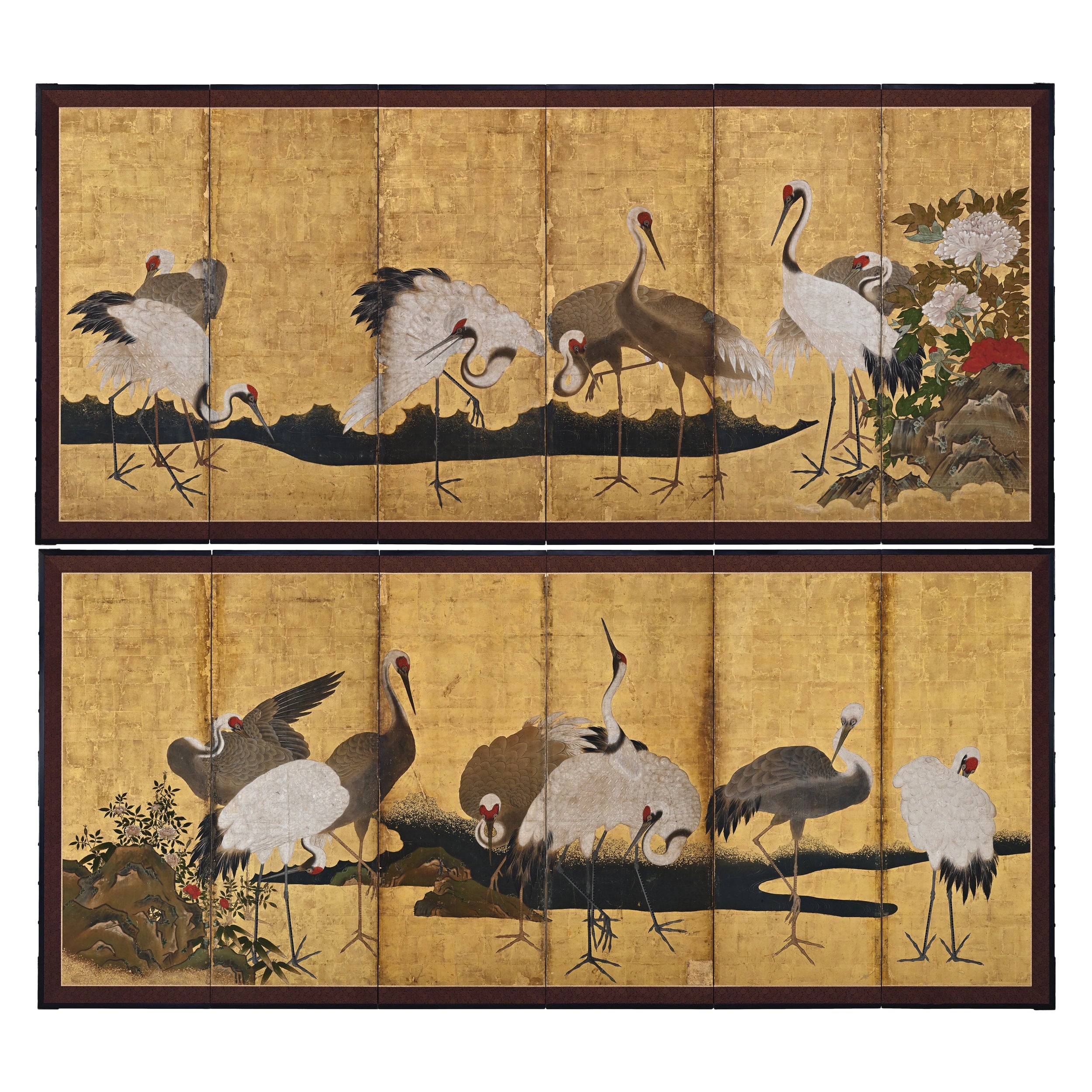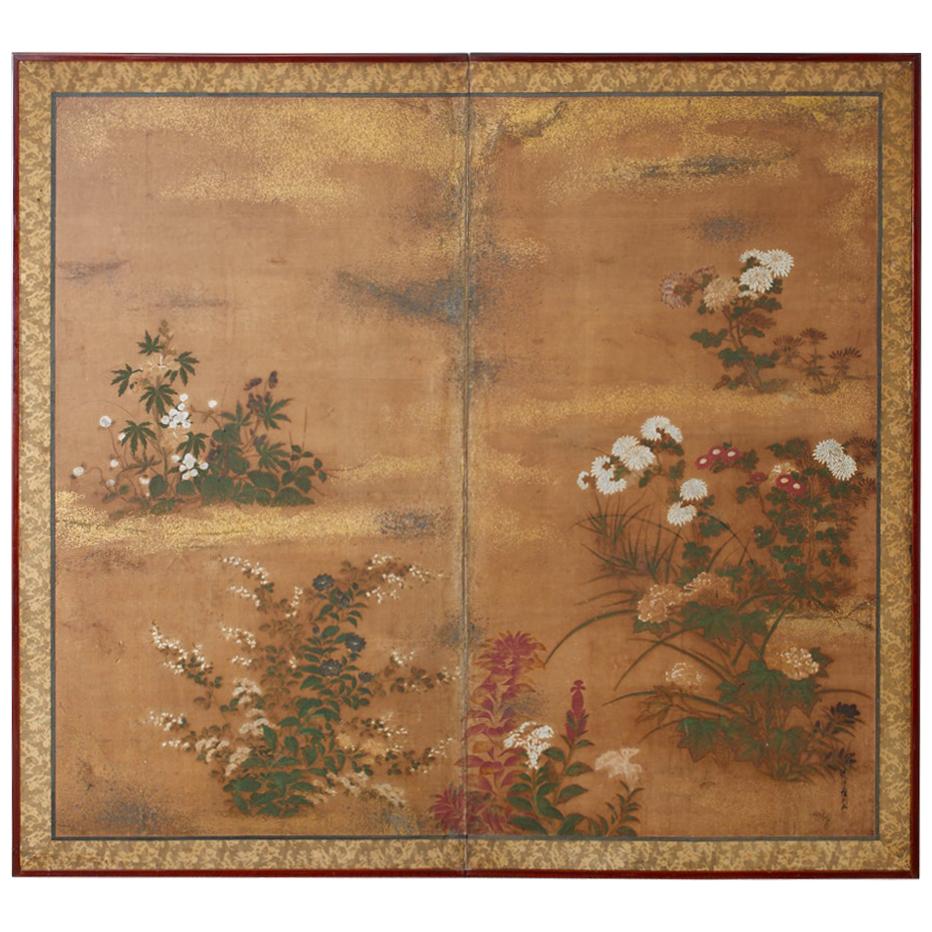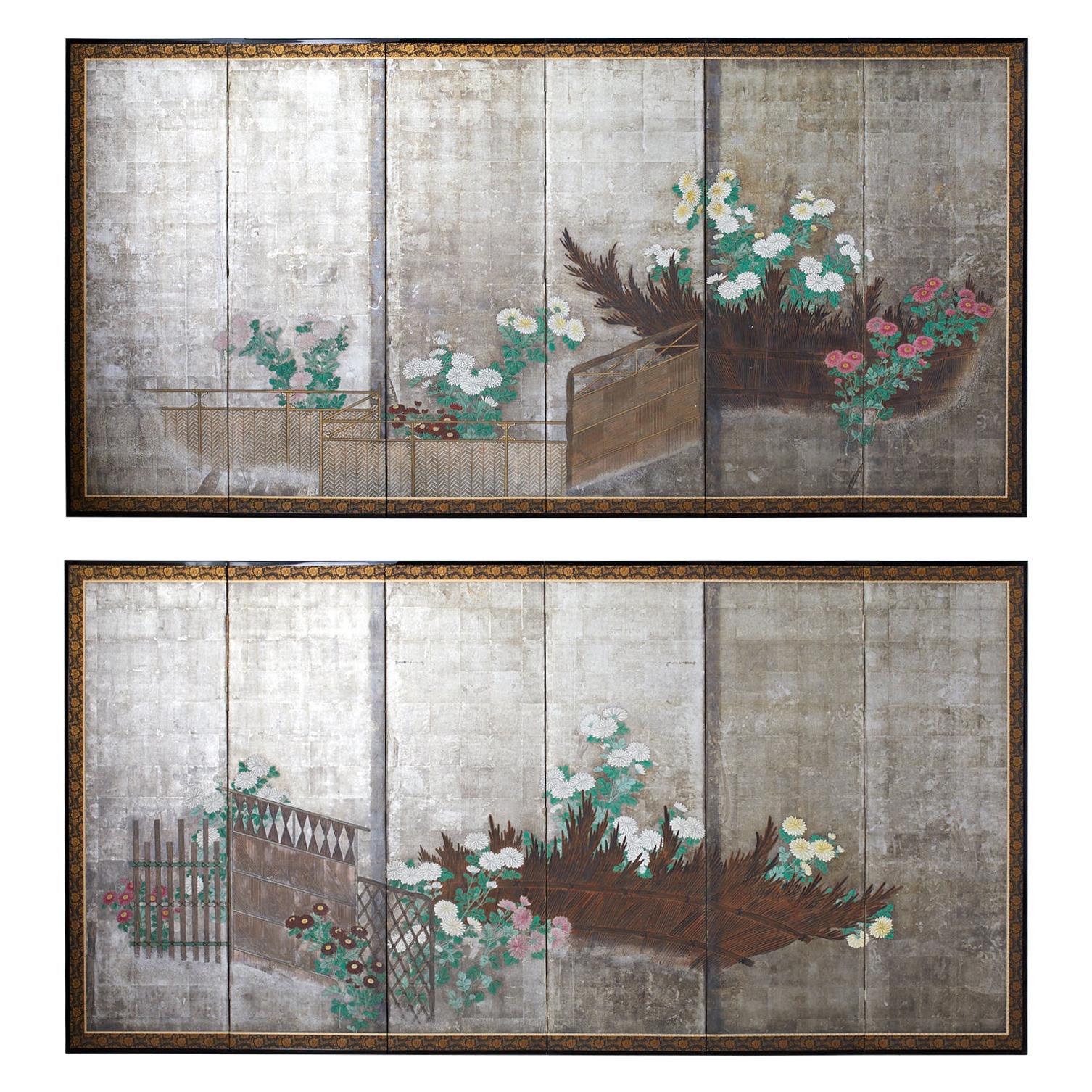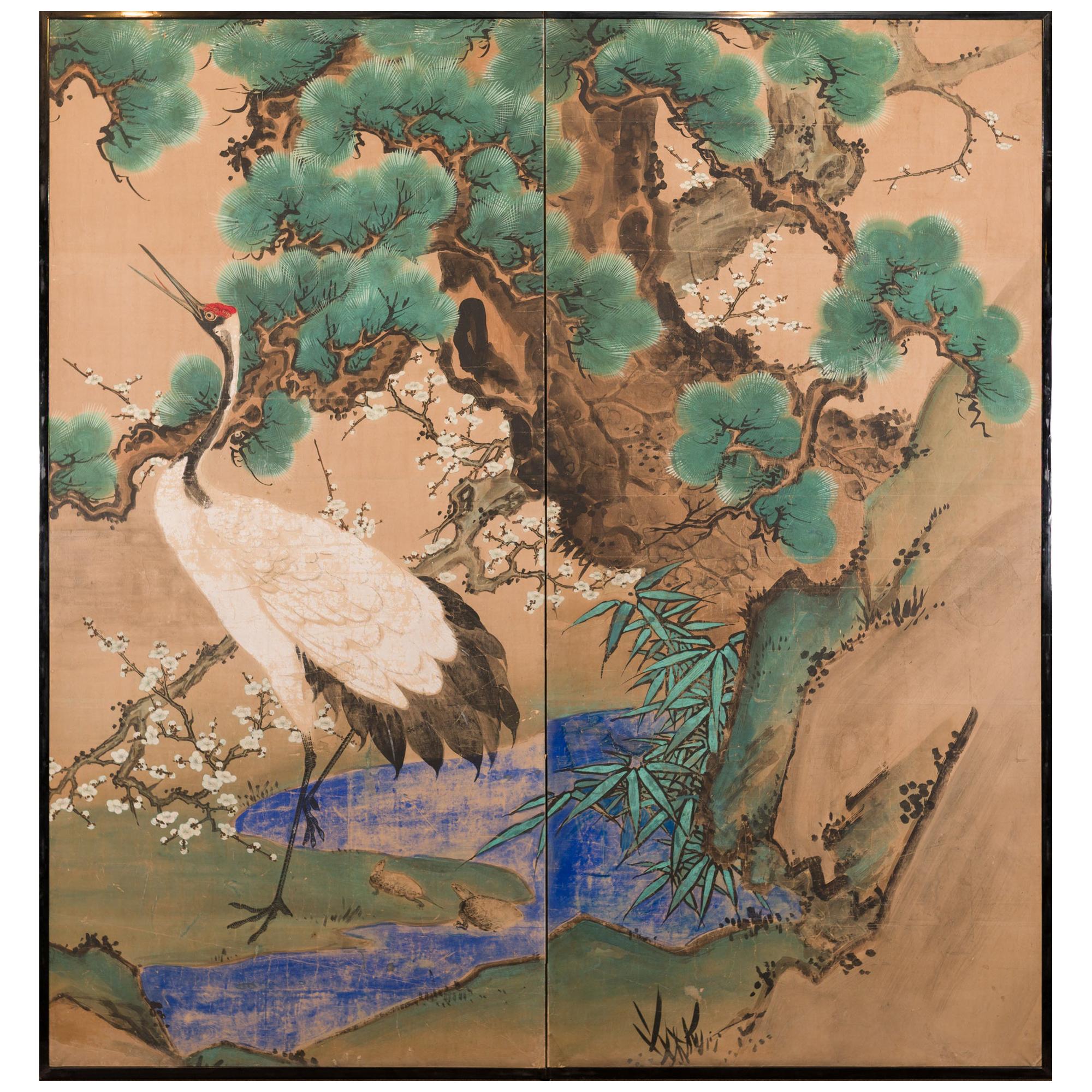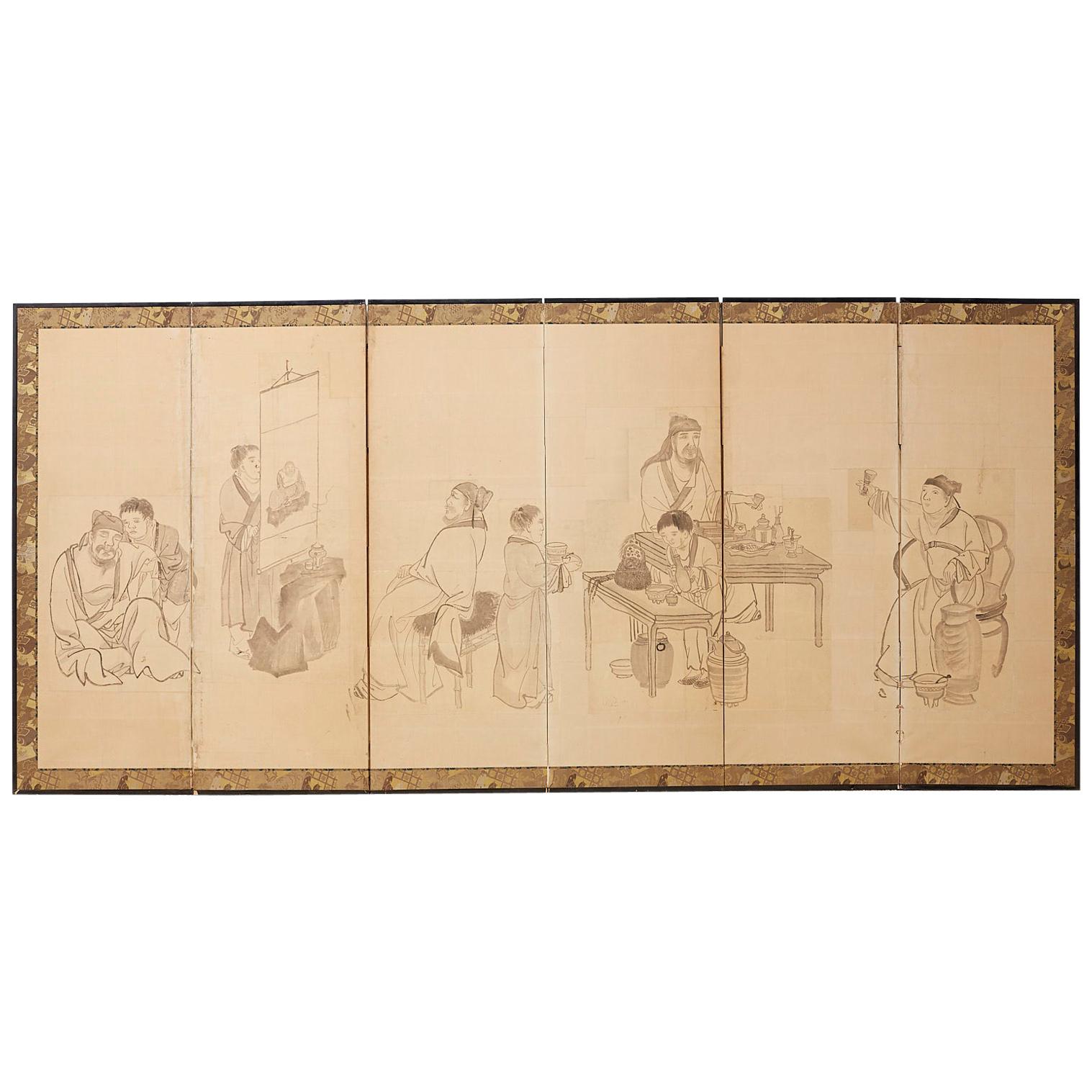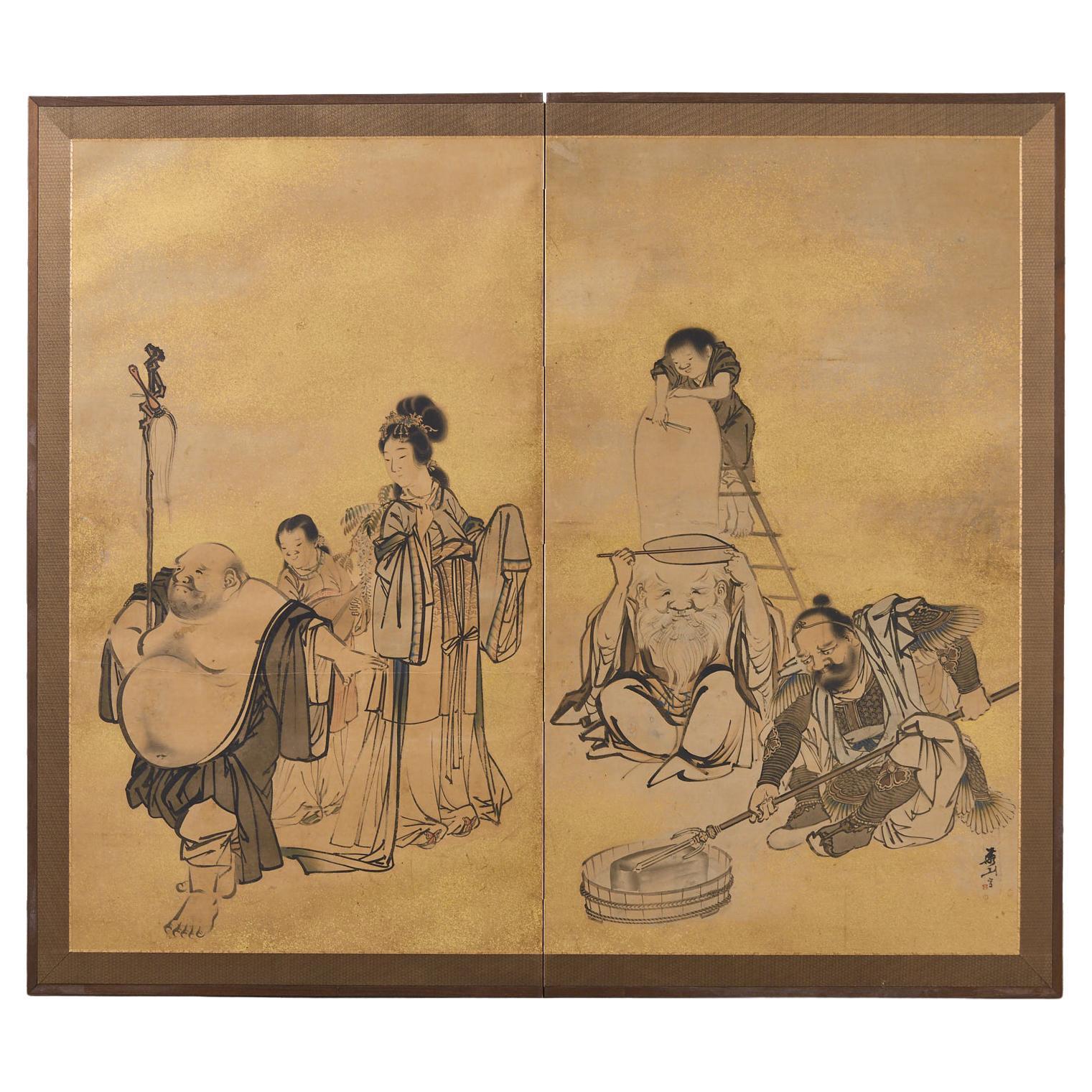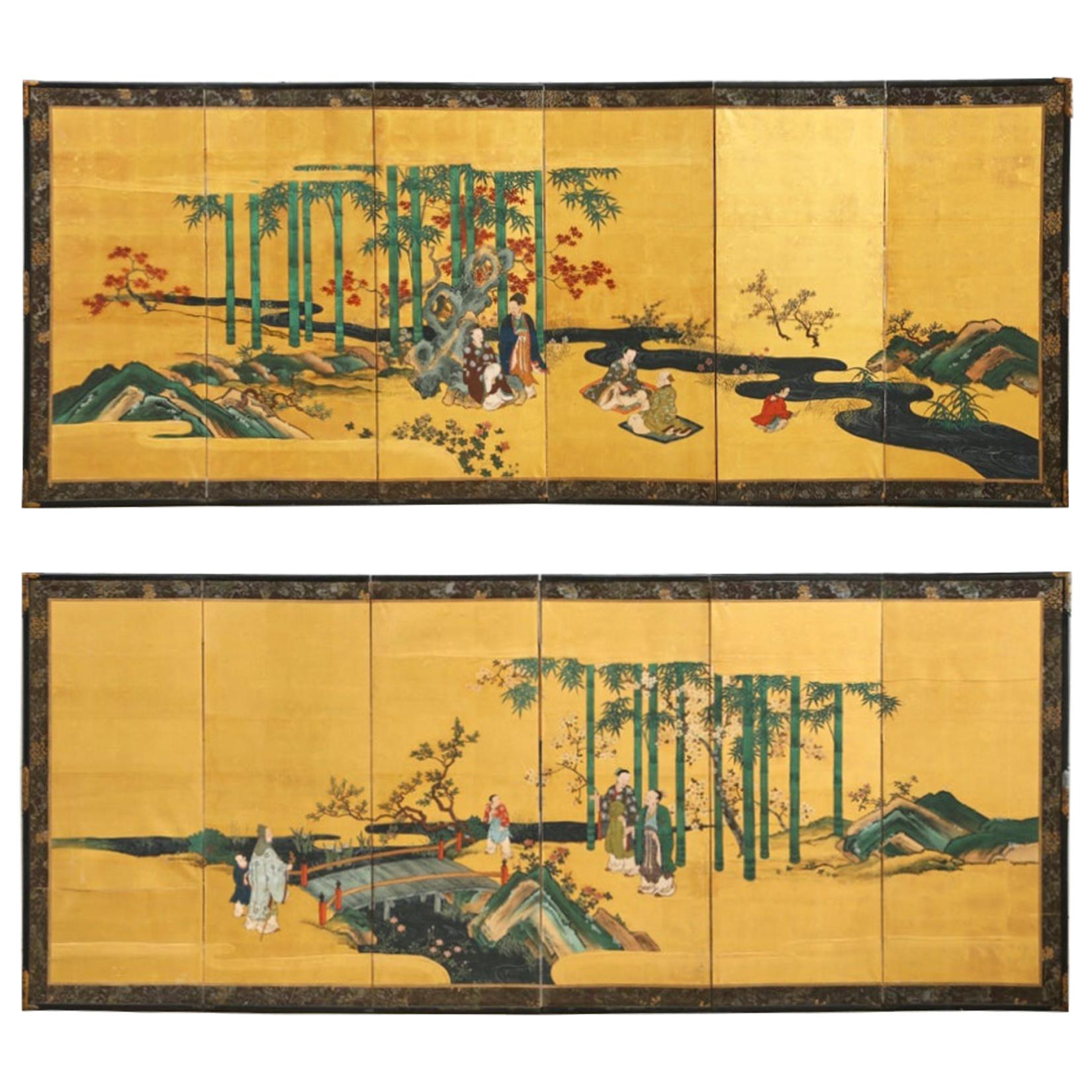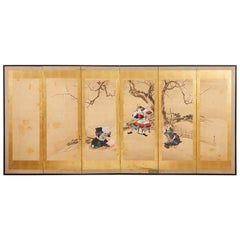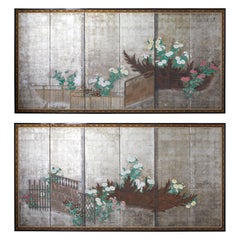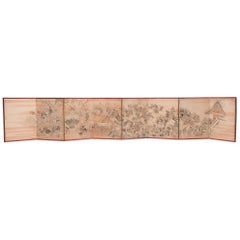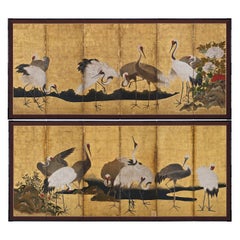
Japanese Edo Screen Hamamatsu Pine Shore with Cranes
View Similar Items
Want more images or videos?
Request additional images or videos from the seller
1 of 21
Japanese Edo Screen Hamamatsu Pine Shore with Cranes
About the Item
- Dimensions:Height: 67 in (170.18 cm)Width: 158.5 in (402.59 cm)Depth: 0.75 in (1.91 cm)
- Style:Edo (Of the Period)
- Materials and Techniques:
- Place of Origin:
- Period:
- Date of Manufacture:Mid-19th Century
- Condition:Wear consistent with age and use. Shows beautifully with excellent joinery and losses as seen in photos. Old repairs with staining, faded patina, and age appropriate wear.
- Seller Location:Rio Vista, CA
- Reference Number:1stDibs: LU1555215974941

About the Seller
5.0
Erin Lane Estate is based in the San Francisco Bay Area, and its team of furniture restorers, art curators, professional appraisers and Asia specialists sources prime vintage and antique furniture from the finest estates in Northern and Southern California. Erin Lane Estate specializes in Hollywood Regency, McGuire, Chinese and Japanese pieces.
Diamond Seller
These expertly vetted sellers are 1stDibs' most experienced sellers and are rated highest by our customers.
Established in 2000
1stDibs seller since 2015
2,656 sales on 1stDibs
Typical response time: 1 hour
More From This SellerView All
- Japanese Edo Six Panel Screen Yoshitsune and BenkeiLocated in Rio Vista, CASpectacular 19th century Japanese late Edo period six-panel byobu screen depicting Yoshitsune and Benkei, two heroes of Japanese folklore. Crafted in ink and natural color pigments on mulberry paper with thick gold leaf borders on each panel. The character Yoshitsune is seated under a blossoming cherry tree in full armor holding a fan. The warrior priest or monk Benkei is depicted kneeling on a leopard skin...Category
Antique 19th Century Japanese Edo Paintings and Screens
MaterialsBrass, Gold Leaf
$3,840 Sale Price20% Off - Japanese Edo Two-Panel Screen Flowers of AutumnLocated in Rio Vista, CAImpressive early 19th century Japanese Edo period two-panel screen featuring flowering plants and grasses of autumn. Painted in the Tosa School style Bunka Bunsei period or Ogosho pe...Category
Antique 19th Century Japanese Edo Paintings and Screens
MaterialsSilk, Wood, Paper
- Pair of Japanese Edo Screens Chrysanthemums Along FenceLocated in Rio Vista, CARemarkable pair of early 19th century Japanese late Edo period screens depicting summer chrysanthemums growing along a brushwood fence. Ink and...Category
Antique 19th Century Japanese Edo Paintings and Screens
MaterialsSilver Leaf
- Japanese Edo Period Six Panel Screen of Chinese ScholarsLocated in Rio Vista, CAFascinating 19th century Japanese late Edo period six pane funpon screen. Large scale depicting Chinese scholars and officials engaged in leis...Category
Antique 19th Century Japanese Edo Paintings and Screens
MaterialsWood, Paper, Silk
- Japanese Edo Two Panel Screen Deities by Yokoyama KazanLocated in Rio Vista, CAWhimsical Japanese late Edo period two-panel screen circa 1800 by Yokoyama Kazan (Japanese 1784-1837). The screen depicts four of the seven Gods or deities ...Category
Antique 19th Century Japanese Edo Paintings and Screens
MaterialsBrass, Gold Leaf
- Pair of Japanese Edo Six Panel Screens the Seven SagesLocated in Rio Vista, CAFantastic pair of 19th century Japanese late Edo/early Meiji period six-panel screens titled The seven sages of the bamboo grove. The Kano school screens...Category
Antique 19th Century Japanese Edo Paintings and Screens
MaterialsBrass, Gold Leaf
You May Also Like
- Japanese Edo Festival Screen, c. 1750Located in Chicago, ILThis 18th century folding screen is a stunning example of Japanese artistry. Beautifully painted with delicate brushwork, the evocative screen depicts a lively festival during the Ed...Category
Antique Mid-18th Century Japanese Edo Paintings and Screens
MaterialsPaper
- Circa 1700 Japanese Screen Pair, Cranes & Pines, Kyoto Kano SchoolLocated in Kyoto, JPPines and Cranes Anonymous. Kyoto Kano School. Late 17th/early 18th centuries, circa 1700. Pair of six-panel Japanese folding screens. Ink, gofun, pigment and gold leaf on paper. This bold composition presents two pine trees extending to the left and right across a gold leaf background. One tree is silhouetted against a green ground, golden clouds obscuring its true size, the other stretches across a stylized waterway. The pines are paired with Manchurian cranes with red crests and snow white plumage. Both have been highly auspicious motifs in East Asia since Chinese antiquity. Here the artist utilized fluid and instinctive ink brushstrokes to define the trunk, branches and tail feathers, in strong contrast to the precision and sharp angularity of the crane’s legs and beaks. The adoption of this vast metallic painting support required an unerring sense of design and composition, so that the negative space surrounding motifs could imply context for the otherwise floating pictorial elements. The brushwork detailing the trunks of the pines, the exaggerated dimensions of the pine trees and the strength and dynamism of the composition are all reminiscent of Kano Eitoku...Category
Antique Late 17th Century Japanese Edo Paintings and Screens
MaterialsGold Leaf
- 17th Century Japanese Screen Pair, CranesLocated in Kyoto, JPCranes Anonymous, Kano School. Edo period, second half of the 17th century. Pair of six-panel screens. Ink, pigment gofun and gold l...Category
Antique 1670s Japanese Edo Paintings and Screens
MaterialsGold Leaf
$85,000 / set - Japanese Two Panel Screen Manchurian Crane and TurtlesLocated in Hudson, NYIn Japan, cranes symbolize fidelity as they mate for life and turtles symbolize longevity. Additionally, this screen also has the Japanese motif of sho-chiku-bai, or the three friends of winter (pine, plum, and bamboo). So called the three friends of winter because all three flourish during the cold months. This screen was originally fusuma doors...Category
Antique Mid-19th Century Japanese Edo Paintings and Screens
MaterialsPaper
- Japanese Two Panel Screen Amorous Cranes and TurtlesLocated in Hudson, NYJapanese two panel screen: Amorous Cranes and Turtles. In Japan, cranes symbolize fidelity as they mate for life and turtles symbolize longevity. Additionally, this screen also has the Japanese motif of sho-chiku-bai, or the three friends of winter (pine, plum, and bamboo). So called the three friends of winter because all three flourish during the cold months. This screen was originally fusuma doors...Category
Antique 1850s Japanese Edo Paintings and Screens
MaterialsWood, Paper
- Japanese Six Panel Screen with Hotei, Edo Period, Early 19th CenturyLocated in Austin, TXA delightful Japanese six panel painted paper screen featuring the beloved figure Hotei, Edo Period, early 19th century. Hotei, called Budai in China, and known as the Laughing Buddha or Fat Buddha in the West, is considered to be an emanation of Maitreya, the Buddha of the Future. In Japan, he also holds a special place as one of the Seven Lucky Gods, being the god of fortune, and protector of children. He is always portrayed as a mirthful and corpulent man, dressed in loose robes that show off his round belly. He carries a sack with him, said to be filled with treasure. As the protector of children, he is often portrayed with them playing on or around him, as he is here. The children portrayed in this screen are dressed in Chinese style clothing...Category
Antique Early 19th Century Japanese Edo Paintings and Screens
MaterialsSilk, Paper
Recently Viewed
View AllMore Ways To Browse
Japanese Screens And Cranes
Japanese Crane Screen
Japanese Screen Cranes
Cranes Silk Japanese
Japanese Screens With Cranes
Gold Leaf Cranes
Crane Silk Painting
Large Brass Cranes
Gold Screen Crane
Japanese Screen Waves
Crane Paintings Gold Leaf
Japanese Sea Screen
Asian Gold Leaf Panels With Cranes
Japanese Sail Boats
Antique Painted Screen
Paneled Asian Screens
Asian Panel Screens
Asian Screens And Panels
